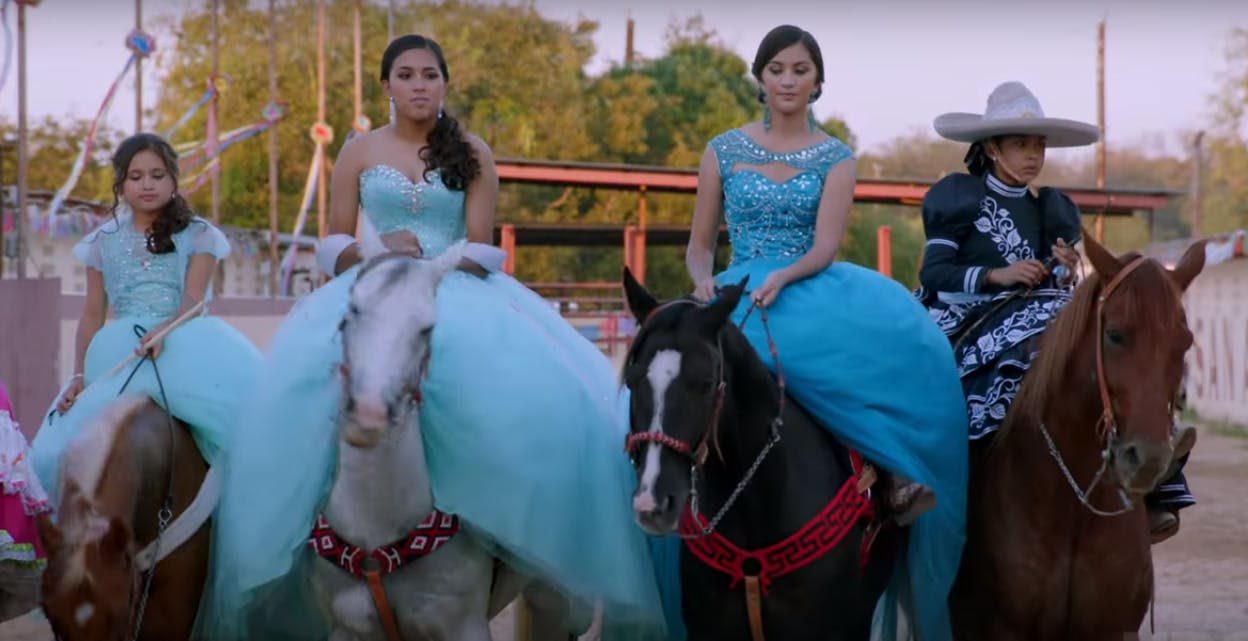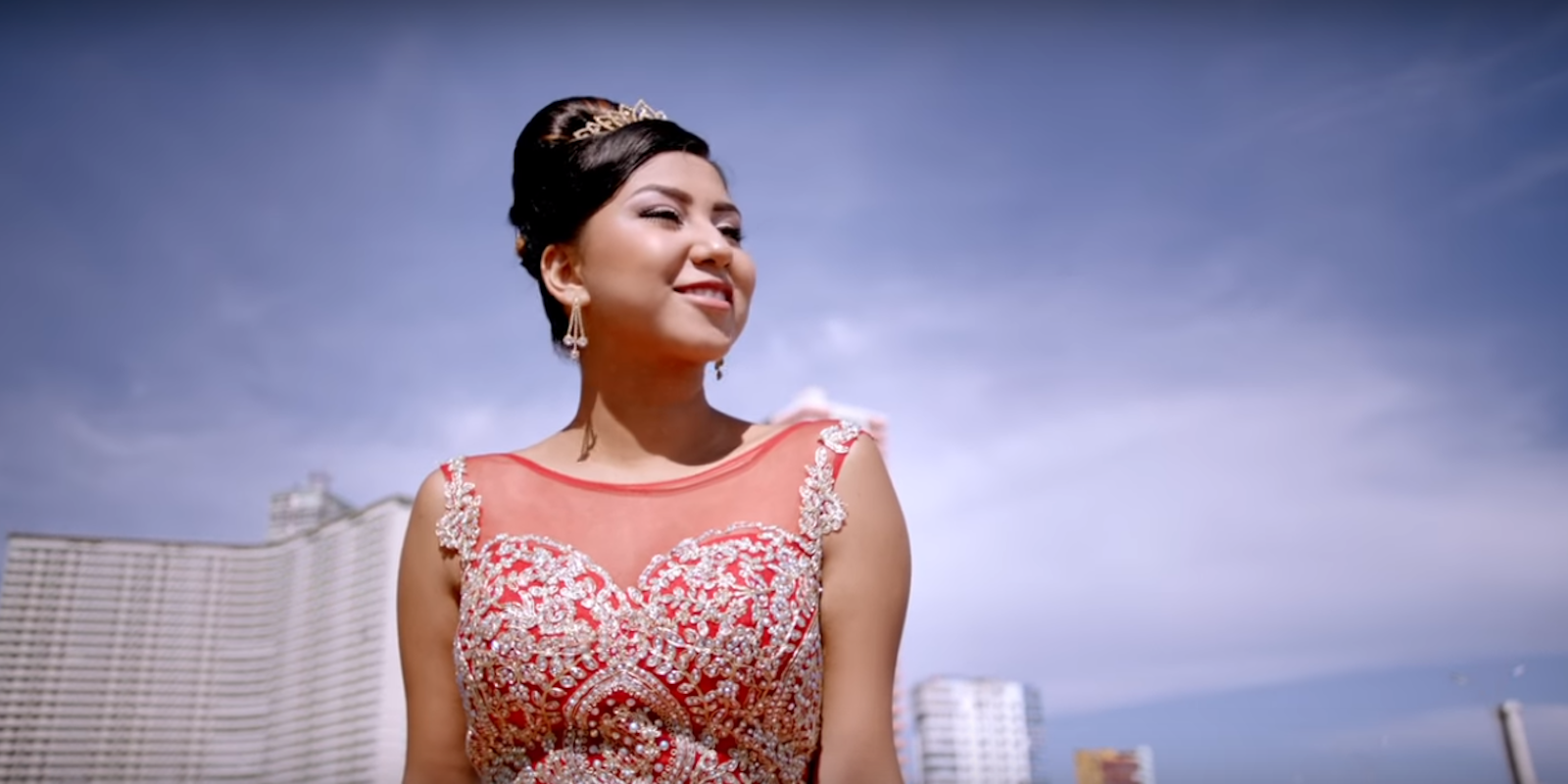There is a moment during a quinceañera ceremony where the 15-year-old, the “quinceañera,” walks in dressed in a beautiful gown and triumphantly presents herself to the world as a young woman. Few instances in modern culture capture the transition into womanhood as optimistically as this centuries-old rite of passage. It’s a coming-of-age Latinx tradition for girls and as HBO’s new docuseries 15: A Quinceañera Story shows, there is no one or right way to become a woman.
Through the stories of five different girls, executive producer Tommy Mottola and directors Matthew O’Neill and Thalía Sodi give us an inspiring glimpse into four unique quinceañera celebrations that not only reflect each girl’s heritage but how their identities fit into a wider political landscape.
Historically quinceañera origins are similar to those of debutante balls, where young women present themselves to society, letting everyone know that they are on the market. But today, the ceremony is more significantly a nod to one’s heritage and a celebration of family. Some young women have even underscored the importance of the tradition by using the quinceañera as a symbol to protest political actions harmful to the immigrant community. Though often expensive, the 15th birthday event is distant from the saccharine, extravagant images we use to identify the American sweet 16.

15 is formatted into four short documentaries. In them, we learn the story of Zoey, a trans Mexican-American who is now celebrating her quince thanks to the help of her trans madrinas or godmothers. Rosi is a bi-racial Guatemalan and Cuban girl from Florida, who celebrates her multi-cultural quince in Havana because her grandfather can’t get a visa to visit the U.S. There’s Ashley, a young boxer from East Los Angeles whose mother is undocumented and whose coach is facing deportation proceedings. Finally, there is Jacki and Nina, two Mexican-American girls from San Antonio, who decide to celebrate together and incorporate their love of escaramuza, the practice of traditional Mexican horse-dancing.
“The featured young women are examples of the breadth and diversity of the Latina experience in America,” O’Neill told the Hollywood Reporter. “We’re proud to celebrate them and their communities as they contend with the complicated realities of growing up in America today.”
Since each doc is only a 30-minute vignette, some of the finer details of each story feel rushed. In the third episode, the audience is quickly taken from an introduction of Ashley’s hardworking mother into an on-camera interview of Ashley crying about her father, who left when she was young. Though these moments help provide context, they serve as a reminder that we are entering the story right at the end of the quinceañera preparations. We see moments like dress shopping and location prepping, but much of the story is given through interviews and narration.

The series does an admirable job of capturing the preciousness of each quinceañera ceremony, not because it spends exuberant time on the tradition itself, but because it focuses a lot of energy on each girl. In the first episode, we’re introduced to Zoey, a giggly teen watching Grease cuts with her friend, quoting her favorite lines, and talking about finding a boy she can dance with at her party. Zoey loves her friends, Breakfast at Tiffany’s, and wants a huge pink pastel dress for the occasion. These details help underscore that as a trans girl, Zoey’s journey is more than a rite of passage, but a celebration of her path to becoming herself. “This is not just a party for many of us,” one of Zoey’s trans madrinas Maria says. “It’s a symbol of hope.” The episode feels triumphant, instead of being a dogged attempt to prove that Zoey is worthy of the same joy and love as any cis-girl her age.
For Ashley, the preciousness of her story is emphasized by the harsh reality that those who love her most, her mother and coach, could be deported. Despite the weight of these stories, the series manages to provide an optimistic viewpoint into the lives of these young women of color. During a time when families are being separated by Immigration and Customs Enforcement and trans people of color are dying at tragic rates, stories like Zoey’s and Ashley’s uplift the joy that is still pervasive in these communities. Unfortunately, the series should have taken steps to include a Black or dark-skinned Latina to more widely feature the breadth of the Latinx experience.
The series is a beautiful tribute to the relationships that help usher young people into the next stage of their life. The best moments in the show are heartfelt conversations with a mother, madrina, mentor, or friend. These gems root each story to the importance of family, heritage, and change—things that are not specific to the quinceañera ceremony. These stories are a testament to the hope young women carry as they move forward into a changing world.
Still not sure what to watch on HBO? Here are the best movies on HBO, the best HBO documentaries, and what’s new on HBO Go this month.


